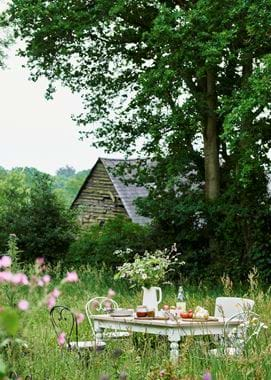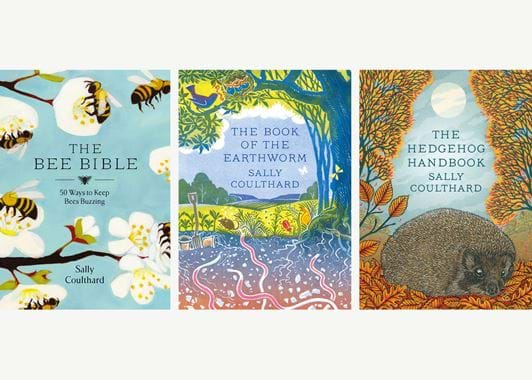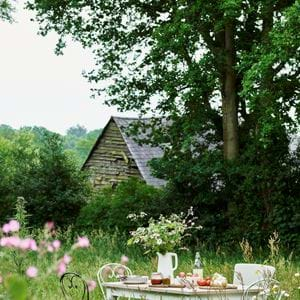A gardener’s best friends
A gardener’s best friends
Gardening and nature were once at odds. But an increasing number of green-fingered growers are discovering that a vibrant, productive and flower-filled garden shouldn’t involve endless rounds of slug pellets, pesticides and weed killer. Encouraging wildlife into your back garden not only boosts biodiversity but many of our native creatures will actively give you a helping hand. Whether it’s bees and butterflies pollinating your vegetable plants, earthworms enriching the soil or hedgehogs nibbling pesky garden pests, gardeners in the know are opening their garden gates and welcoming wildlife in.
Bees & pollinators
Bees and other insects pollinate a vast range of garden produce from strawberries to apples, peas to French beans, and an even bigger number of wild plants. From growing a wide variety of herbs to planting trees for bees, there are plenty of ways to make your garden irresistible to pollinators:
- Aim for year-round garden interest. Bulbs and blossom in spring, perennials and flowering herbs in summer, and late flowering nectar plants such as sedum in autumn – pollinators will be spoiled for choice if you plant for successive seasons.
- Only use the hosepipe in the early morning or early evening when bees and other pollinators are less likely to be flying about. Even better, use an irrigation system which drips the water directly onto the soil.
- Don’t use pesticides or herbicides. Look into pollinator-friendly ways to tackle garden pests and weeds such as companion planting, vegetable crop rotation, adding organic matter such as mulch or compost to the soil, and using natural deterrents and barriers.
- Build a bee drinker. Pollinators need water to survive but soon drown in deep puddles and pools. A saucer or shallow dish filled with pebbles makes a safer watering hole.
- Mow less. Research has shown that people who cut their lawns once a fortnight over summer have more bees than those who mow every week. Patches of long grass are also a vital habitat for solitary bees and bumblebees.
Hedgehogs
Hedgehogs are voracious eaters and choose from a wide menu of garden pests including earwigs, beetles, caterpillars and slugs. You can entice hedgehogs to visit your garden by leaving patches of wild planting, providing food and water between March and November, and creating places for them to nest.
- Hedgehogs are lactose intolerant so shouldn’t eat milk or other forms of dairy. Bread, cakes and salty food are also not advised. Tinned or dry cat/dog food, or specialist hedgehog food, is ideal – 100g per night per hedgehog is plenty.
- Hedgehogs wander long distances at night-time in search of food and mating partners. Encourage them to wander from garden to garden by cutting a 13x13cm hole in the base of your fence, digging a hedgehog-sized tunnel underneath a shared boundary, or replacing your fence with a hedge.
- Slug pellets, bonfires, netting and strimmers are all deadly for hedgehogs – check your garden for hedgehog hazards.
- Buy or make a hedgehog house, which they’ll use as a summer nest and a winter hibernaculum. Place the house in a quiet corner, away from human noise, and next to plenty of nesting material such as leaves, straw or thin twigs.
- Leave a wildlife corner – an overgrown patch of long grass, a length of hedgerow, a log stack or pile of leaf litter – where a hedgehog can forage for food and find rest.
Earthworms
Soil rich in earthworms has been shown to grow a greater quantity of fruit and vegetables and boost their nutritional content. Worms also aerate the soil and help plants release defensive compounds, making them more able to resist insect attack. Earthworms attract other wildlife to your garden too, including owls, garden birds, amphibians and hedgehogs.
- Worms thrive in cool, damp soil. Add plenty of organic matter – such as well-rotted manure, mulch or compost – to the surface of your beds in early spring (but don’t dig it in) and keep your garden well-watered in dry weather.
- In autumn, leave leaf litter to break down naturally rather than removing it. Decaying leaves are a vital source of food and shelter for many invertebrates including worms, small mammals and garden birds, and add valuable nutrients back to the soil.
- Try sowing ‘green manures’. These are nutrient-fixing crops such as mustard, crimson clover and phacelia which you plant to cover the soil while it’s bare and can then dig in to enrich it later.
- Soil which is regularly sprayed with chemicals seems to produce earthworms that are smaller and less able to reproduce. Look into natural pest solutions such as organic sprays or biological methods like nematodes.
- Rotivating, heavy digging and walking on soil damages its delicate structure and destroys earthworm tunnels. Aim to disturb your soil as little as possible and use paths or stepping stones to minimise compaction.
Sally Coulthard is a bestselling author, columnist and smallholder. Her books cover all sorts from design to history to crafts, while her volumes on nature include ‘The Bee Bible’, ‘The Hedgehog Handbook’ and ‘The Book of the Earthworm’.








